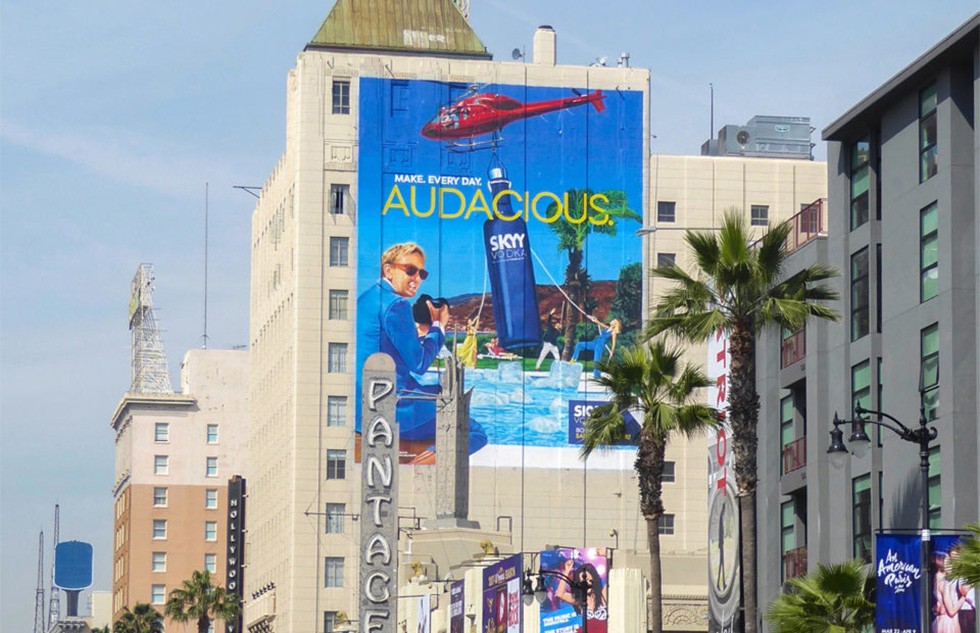
![]()
Capturing the attention of someone at home with advertisements can be difficult. Commercials are often used as bathroom breaks, and attention can be difficult to ask for from those who want to disconnect through mindless scrolling. Out-of-home (OOH) advertising, however, is a medium that captures attention when audiences are most willing to engage. Billboards are seen by those paying attention to their surroundings while driving. Wallscapes and bus shelters are seen by those walking and biking by.

While digital placements are crucial to most media plans, OOH is continuously overlooked despite delivering increased reach and impact. Here’s why we think it’s a necessary channel.
Reach Your Audience Quickly
Digital advertising is highly targeted and personalized, but despite the massive shift in viewing from broadcast and cable TV to online streaming, its reach is still often fragmented. OOH, on the other hand, offers a broad, yet localized, canvas that can capture the attention of thousands, if not millions, of people on a daily basis. OOH can boost the reach of a campaign running on other media channels.

OOH delivers brand messages at scale in high-traffic locations where people are not just consuming media, but living their lives. In a world where consumer attention is increasingly scattered across devices, the physical, inescapable presence of OOH offers a chance to break through the noise.
Measure Your OOH Campaign Success Easily
A common critique of OOH used to be its lack of measurability. Digital channels’ precision and delivery have trained us to expect every impression and click to be trackable, and marketers demanded more from OOH. The good news? OOH has caught up.
And thanks to advancements in technology, advertisers can measure OOH campaigns with impressive granularity.
For example, foot traffic studies now allow brands to track the flow of people exposed to OOH placements. Mobile data integration can reveal how exposure leads to website visits or app downloads, closing the attribution gap that once limited the channel’s appeal. In fact, OOH has been shown to drive a measurable lift in search traffic, a behavior that directly ties brand visibility in the physical world to actions taken online.

O.H. Partners uses a proprietary Marketing Impact Modeling tool, OHIQ, to aggregate advertising analytics from multiple sources, including OOH and other traditional media sources. This means that brands using OHIQ can measure the success of their campaigns in real-time, leading to more optimized media mixes, lower costs, and increased ROI. Learn more about this revolutionary tool here.
Amplify Your Brand’s Digital Messages
OOH isn’t just a standalone channel—it works in harmony with other media. One of its most underrated strengths is its ability to amplify digital campaigns. By combining OOH with mobile or social strategies, brands can create an omnichannel experience where one medium feeds the other.
“As with any medium used in isolation, out-of-home may not deliver the results brands are looking for all by itself. It's most powerful when used as an amplifier of other channels and ultimately delivers the highest share of post-exposure online searches and site visits, more than any other medium.” - Fraser Elliott, SVP Media & Analytics
Diversity and Innovation
Once limited mostly to static billboards, OOH has evolved to offer digital formats, programmatic buying, and creative executions that allow for real-time updates and localized messaging. Brands can execute hyper-targeted campaigns in specific neighborhoods or roll out national campaigns with consistency, knowing they’ll get localized impact where it matters.

We’ve also seen exciting innovations like augmented reality (AR) experiences, interactive screens that turn OOH into an engaging and immersive touchpoint, and gamification to drive interest and purchase. In cities where attention is scarce, OOH has the potential to be both eye-catching and experiential, creating moments that stick with consumers far beyond their daily commute.

Speaking of commutes, AdWeek just reported on a study showing transit advertising is on pace to exceed its pre-pandemic level of advertiser investment, and now accounts for 16% of total OOH spend. And how about impact? 3 out of 4 US consumers recall seeing transit OOH messaging in the past 30 days.

OOH Examples We Love
RIMAC

Why We Love It
This placement leverages an unusually large size in a high-traffic area and carries up the entire height of the building.
Gila River Resorts & Casinos

Why We Love It
Nothing grabs attention like full motion and a wrap around the corner of a building.
Skyy Vodka

Why We Love It
Its spectacular size, plus the contrast between the creative and the color of the building, makes this placement really stand out.
Wynn Las Vegas

Why We Love It
Being nearly the same size as the entire building it’s placed on makes this unmistakable and impactful.
OOH is More Than Meets the Eye
In an industry that moves fast and is always chasing the next big trend, it’s easy to overlook the power of OOH. But the medium has evolved in ways that not only make it relevant but essential in today’s marketing landscape. Its ability to build rapid reach, offer mass exposure, and integrate seamlessly with digital channels makes it a potent tool for any brand aiming to make a lasting impact.
Contact our team to learn how to integrate eye-catching and high-impact OOH into your brand’s next campaign.
![]()





